Gazzola
Found 134 Items
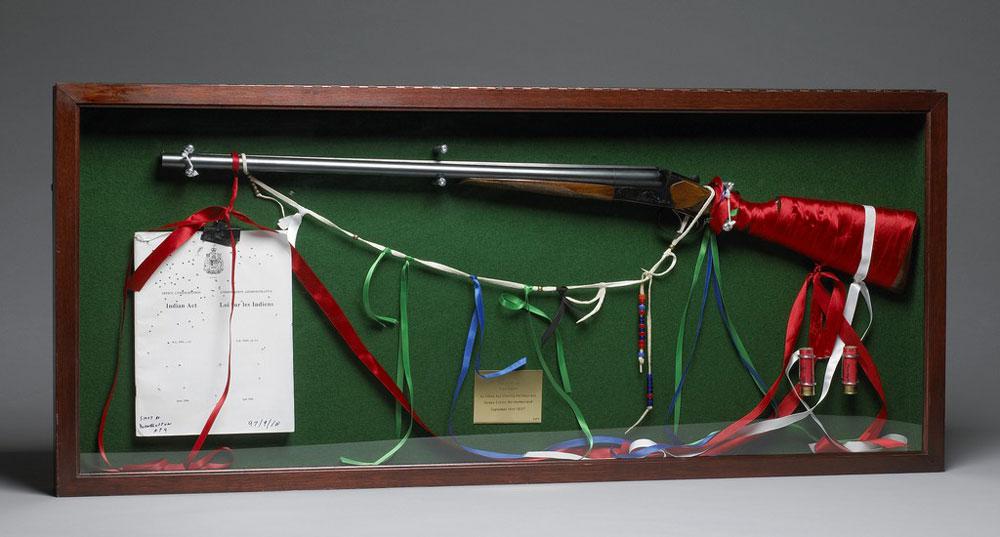
An Indian Act Shooting the Indian Act, Lawrence Paul Yuxweluptin
July 14, 2021Lawrence Paul Yuxweluptin’s An Indian Act Shooting the Indian Act, Healey Estate, Northumberland, September 14th, 1997
Lawrence Paul Yuxweluptin’s An Indian Act Shooting the Indian Act, Healey Estate, Northumberland, September 14th, 1997 is a provocative object; it’s one of those works of art that is symbolic, and resonates to a larger history. Perhaps that’s because I first experienced it – and Yuxweluptin’s accompanying artist talk – in 1999 when he had a solo exhibition at the now defunct Mendel Art Gallery, in Saskatoon. At the time, Saskatoon was finally dealing with the reality of Starlight Tours (the dumping of Indigenous men on the outskirts of the Siberian city of Saskatoon, by the police, as a standard and apparently condoned practice), and the emergence of the Reform Party (before it ate the old Progressive Conservative party alive, like a malevolent cancer). In his talk, Yuxweluptin referred to the latter as ‘hate’ dressed up in more palatable terms, but still clear to anyone who had been paying attention to the history of Indigenous – Settler relations, and the contemporary discourse of the same.
Now in the National Gallery in Ottawa, they offer the following descriptor: ‘The decorated rifle, empty bullet casings and shredded Indian Act are the remains of a live performance at Healey Estate, Northumberland, United Kingdom. In 1997, on three occasions in two different locations in the UK, Yuxweluptun shot up paper copies of Canada’s Indian Act legislation – one of the oldest and most notorious acts in Canadian history. The Indian Act, passed in 1876, remains in effect today and has made “Canada’s Indians” perhaps the most legislated peoples in North America.’
There’s a quiet rage here, that makes this work ‘worthy’ as art, despite the uncomfortable titters of many I heard then (as the Mendel was a City of Saskatoon institution, often making politicians of various levels uncomfortable with artists uninterested in sanitized, or approved ‘histories’ of the Prairies…but this was not unique to the political sphere, as many visual arts institutions there – the University’s art school, or several artist run centres, as well – were taken aback by the blunt truths of Yuxweluptin’s art, preferring lip service to reconciliation and change). ~ Bart Gazzola
Read More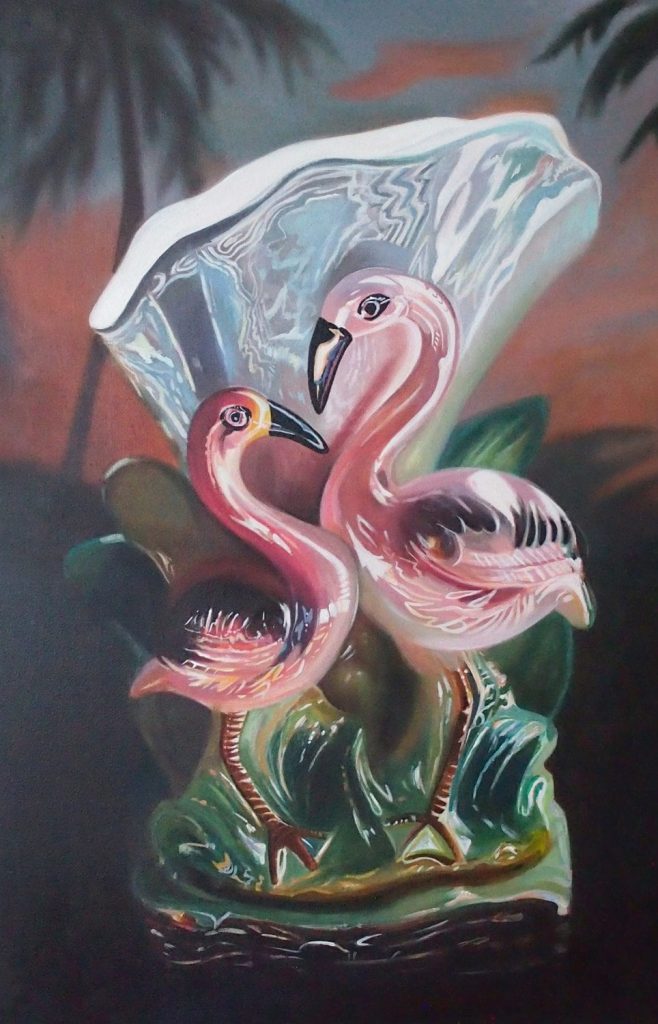
Pink Flamingos, from Melanie MacDonald’s series Florida Noir, 2017
June 28, 2021Pink Flamingos, Melanie MacDonald, from the Florida Noir series, 2017
Melanie MacDonald’s Florida Noir series is comprised of many exquisitely painted works that evoke a multiplicity of responses, such as Pink Flamingos. When we spoke about these paintings, literary references peppered our conversation. MacDonald cited Douglas Coupland (who sometimes fancies himself an artist, and some fancy as a cultural prognosticator): “Florida isn’t so much a place where one goes to reinvent oneself, as it is a place where one goes if one no longer wished to be found.” I found myself ‘speaking’ that ‘Florida is going to dissolve into madness and alligators and toxic waste’, channeling Neil Gaiman’s American Gods. MacDonald paints trinkets of the utopian dream too often projected onto Florida (as in the desperate film noir Midnight Cowboy: “It’s not, not bad, huh? There’s no heat here, but you know, by the time winter comes, I’ll be in Florida.”). In her Florida Noir series, the kitschy, almost disposable trinkets so often dismissed as touristy ‘trash’ become interesting and contested motifs for memory, or even how ‘landscape’ (with all the history and myths in that genre, real or imagined) can be encapsulated in an oft – dismissed gauche ‘souvenir’ or mundane bit of porcelain. You can see more of her work here, and read more about her practice here. ~ Bart Gazzola
Read More
Gabrielle de Montmollin | Weird Baby World
August 13, 2021Gabrielle de Montmollin’s installation Weird Baby World is both engaging and eerie, employing iconography that is evocative and somewhat unsettling. Bart Gazzola offers a response to this street level exhibition, on display at Niagara Artists Centre (NAC) in St. Catharines.
Read More
Rebecca from Alec Soth’s series Niagara, 2005
June 9, 2021Alec Soth, Rebecca, from the series Niagara, 2005
Soth’s images from his Niagara series are contradictions, and though he employs Niagara, N.Y., it might as well be Niagara Falls, ON, as I see the latter, familiar to me both as a child and adult, as well. There’s the obligatory tourist shots of the Falls, but these seem like fanciful ideals when contrasted with the motel facades and the people he captures, which are grittier. This is the real Niagara I know: a site that seems darker than the postcards, or a honeymoon long since gone stale. These are scenes that have much in common with films like Disappearance at Clifton Hill (2019), Niagara Falls (1953) or Falling Angels (2003) – in that last, it looms in the subtext, only seen near the end, but a site of death, perhaps accidental, perhaps intentional. Soth’s people and places might be illustrations for Cataract City (2013), a tale of desperation also about a place that has a thin shiny veneer, already worn and flaking before we even scratch at it further.
A final note: a contemporary photographer in Niagara is offering what might be considered an update on Soth’s vision. Jon Lepp’s The Official Open for Business Series is like checking in, on Soth’s Niagara, and the irony of the title is appropriately bleak, like the world of Soth’s Rebecca, that her child also now inhabits.~ Bart Gazzola
Read More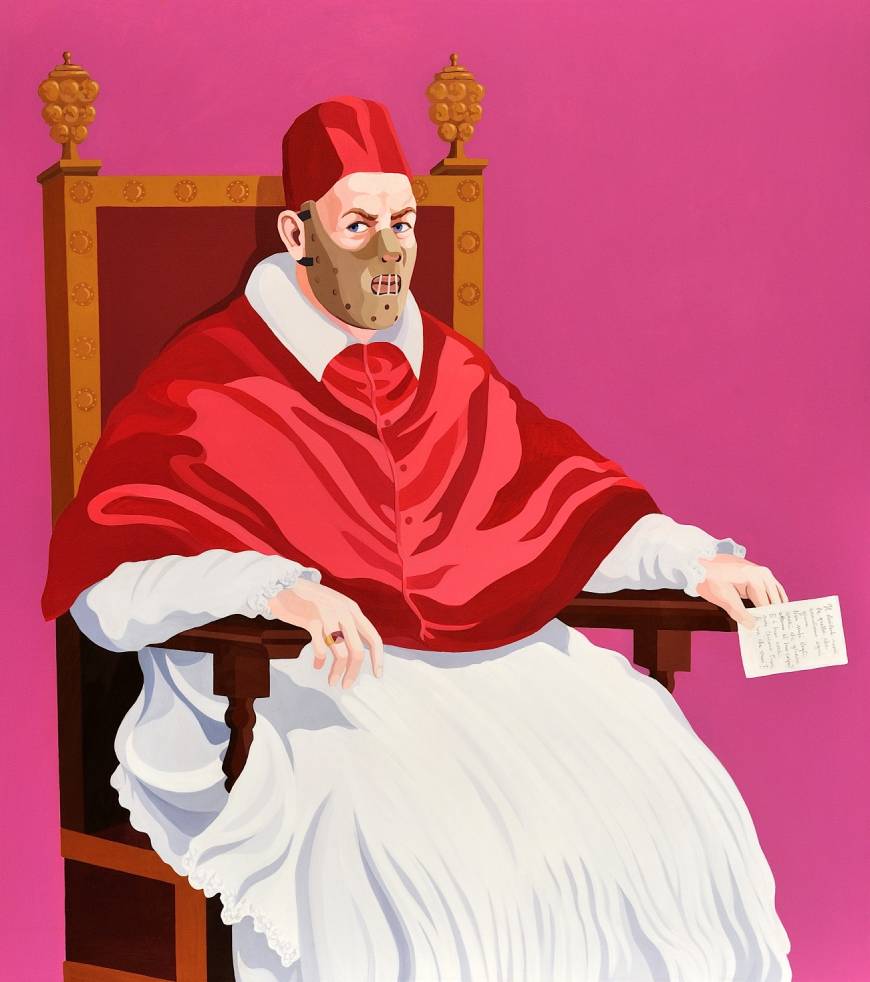
Il silenzio dell’Innocenzo, 2011
May 26, 2021Guiseppe Veneziano, Il silenzio dell’Innocenzo, 2011
To call Guiseppe Veneziano a controversial artist is an understatement. His more challenging works have garnered him fame and censorship, but often his pieces about Koons or Hitler are more stylish provocation than substance, like a child learning a new profanity. But the work I’m sharing today by Veneziano builds upon past artists whose portraits, centuries or decades later, still unsettle us. That this image is less trite and exists more so in the space where art, or art history, can be both subversive and yet direct, is why I consider it worthwhile. 𝘐𝘭 𝘴𝘪𝘭𝘦𝘯𝘻𝘪𝘰 𝘥𝘦𝘭𝘭’𝘐𝘯𝘯𝘰𝘤𝘤𝘦𝘯𝘻𝘰 (2011) appropriates Spanish painter Diego Velázquez Portrait of Pope Innocent X (c.1650), but with the addition of the ‘mouthguard’, so well known to us from Hannibal Lecter. 𝘐𝘭 𝘴𝘪𝘭𝘦𝘯𝘻𝘪𝘰 𝘥𝘦𝘭𝘭’𝘐𝘯𝘯𝘰𝘤𝘤𝘦𝘯𝘻𝘰 has more in common, perhaps, with the painting Study after Velázquez’s Portrait of Pope Innocent X (1953) by Francis Bacon. My own history brings to mind Metis artist Michel Boutin’s amusing and disturbing painting from his Great King Rabbit series: one of his ‘rabbits’ is in papal drag, looking feral, with large teeth, the better to eat you with, my dear (like the skulls of the victims that adorn his throne, with a paw richly adorned in rings, another gripping a stack of cash).
Click HERE for more.
Read More
The Glamour Crew, 1993
May 8, 2021Attila Richard Lukacs, The Glamour Crew, 1993
Atilla Richard Lukacs, for a time, was among the first rank of painters in Canada, if not the world, in his blend of figurative and narrative tropes, appropriating and fracturing art historical references. This work is from his E Werk series, and seeing this monumental (approximately four metres by six metres) painting in person (which I was lucky enough to do, in London, although dwarfed by the figures in his scenes) offers what painting can, and should, be. If you’ve read Timothy Findley’s book Headhunter, it’s understandable to think that his character Julian Slade is based upon Lukacs. At an opening of new paintings, by Slade, in the book, the fictional artist offers the following terse and confrontational statement: “You will see here…savage acts which have been done too long in darkness. It is my belief they should be done in the light. And to that end – these paintings.” Many more of Lukacs’ evocative, if unsettling, painted works can be seen here. ~ Bart Gazzola
Read More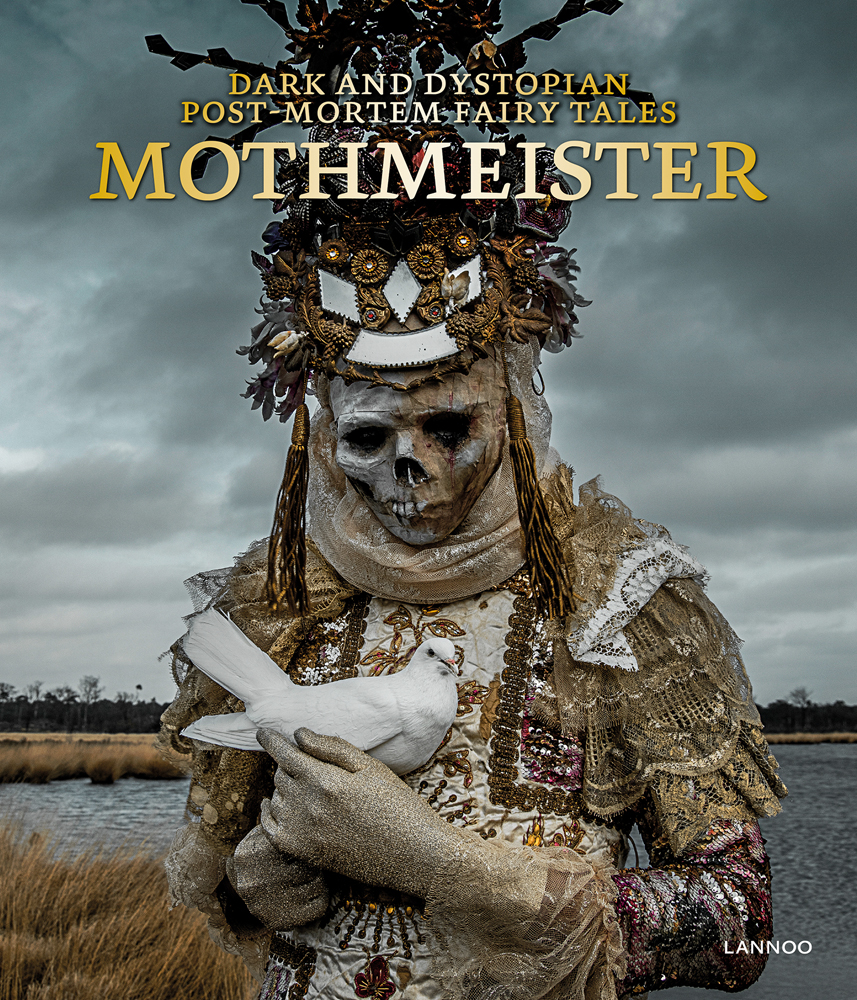
Dark and Dystopian Post – Mortem Fairy Tales
May 26, 2021Mothmeister, Dark and Dystopian Post – Mortem Fairy Tales, 2021
The Belgian artistic duo known as Mothmeister have just released their second book of images entitled ‘Dark and Dystopian Post – Mortem Fairy Tales’, which are a continuation of their beautifully morbid and dark tableaux that they’ve described as Wounderland. These are images that might be described as inappropriately beautiful, with a meticulousness in staging and shooting that might seem in opposition to the subject matter, but are really just a contemporary version of the rich history of memento mori, whether in painting or photography. Their words: “In this luxurious coffee table book we pay tribute to the many muses that incited our unsettling and eccentric dreamworld. These range from artists around the globe, legendary figures and myths and a quirky taxidermy collection to desolate places where our most grotesque and often melancholic characters were born, such as the macabre Capuchin Catacombs of Palermo, the abandoned unearthly town of Pyramiden in Spitsbergen and the site of the Chernobyl disaster.” Follow them on Instagram, and you can buy the book here. ~ Bart Gazzola
Read More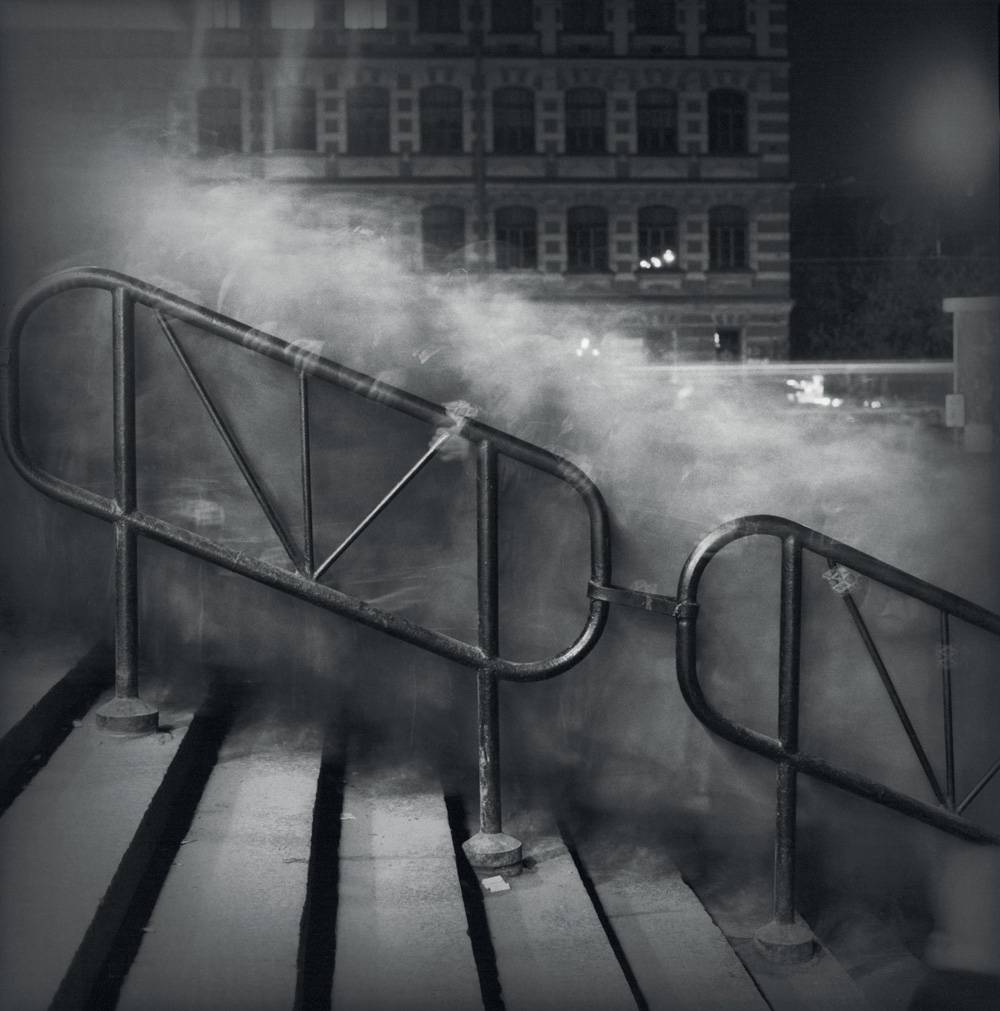
Metro Station Crowd 1, City of Shadows, 1992
April 20, 2021Alexey Titarenko, Vasileostrovoskaya Metro Station Crowd 1, from City of Shadows, 1992
I was twenty two when Titarenko captured this image, a freshly posthumous portrait of the USSR – and that was nearly forty years ago. The Cold War, as we knew it, was over, but the uncertainty, both for the bustling passengers of the once and future St. Petersburg, after its decades as Leningrad, and the rest of the world, is encapsulated in this image. Titarenko is an acclaimed photographer, not least for how after “the collapse of the Soviet Union in 1991 he produced several series of photographs about the human condition of the Russian people during this time and the suffering they endured throughout the twentieth century. To illustrate links between the present and the past, he created powerful metaphors by introducing long exposure and intentional camera movement into street photography. The most well known series of this period is City of Shadows.” More of Titarenko’s work can be seen here.
~ Bart Gazzola
Read More
Dance With Desire
May 8, 2021Irving Layton, Dance With Desire, Selected Love Poems with Drawings by Richard Gorman, 1992
It’s interesting to consider the vagaries of cultural history: what falls in and out of the community mind, and how something that was once a touchstone of cultural discourse may be forgotten. Dance with Desire (Selected Love Poems) by Irving Layton, with illustrations by the late Canadian artist Richard Gorman is notable in this light. Layton (1912 – 2016) offers poems that are often blunt and unflinching, whether about desire or despair in the realms of love and lust (‘...your unopened / Brittle beauty troubles an aging man / Who hobbles after you a little way / Fierce and ridiculous’). Comparisons to Catullus are appropriate. Gorman (1935 – 2010) intersperses and augments the text, with monochromatic, frenetic drawings, aswirl and emotional: one might see faces and forms, of lovers, perhaps entangled or trying to remove themselves from the fray. This was published by Porcupine Quill’s Press and Lake Galleries (the latter producing an additional 110 copies with numbered and signed prints by Gorman, as a limited edition artwork in book form). You can purchase it here. ~ Bart Gazzola
Read More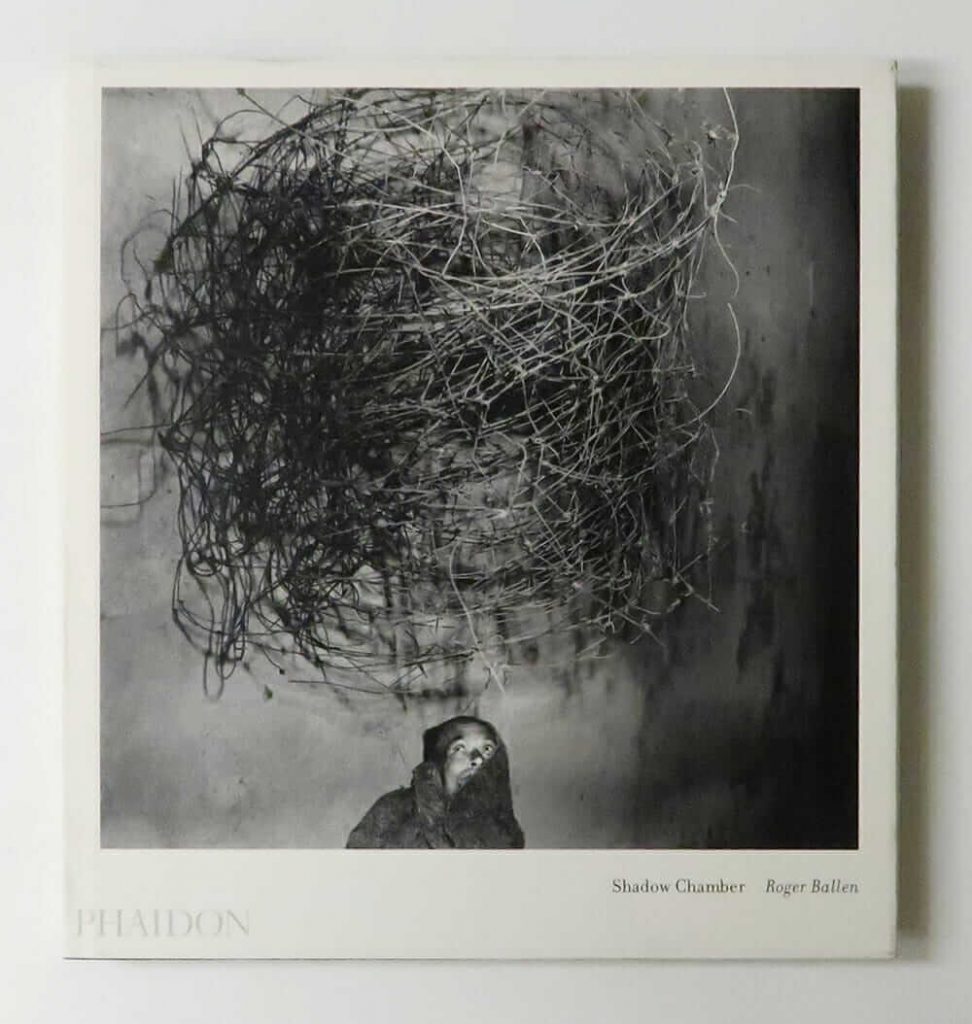
Shadow Chamber
April 20, 2021Roger Ballen, Phaidon Press, 2005
I’ve been familiar with Roger Ballen’s work for several years: the direct yet unsettling images bring to mind the works of Eugene Meatyard or Diane Arbus, and with hints of a performative macabre that goes beyond those two, and perhaps edges up against Joel Peter Witkin (but with less demonstrably ‘freaky’ and more subtle, and thus more pervasive, characters and settings that are more disturbing in their supposed banality) . In an introductory text to this wonderful collection of Ballen’s photographs, Robert A Sobieszek offers the following: “To discern fact from fiction in this work may be simply impossible; to tell acting from real life may also be; to bother with such discernment may not be only futile but missing the point.” I’d argue that Ballen’s work is a glimpse of the very real, and it’s stark and unflinching. A good introduction to this prolific artist’s aesthetic.
~ Bart Gazzola
Read More
Recent Comments